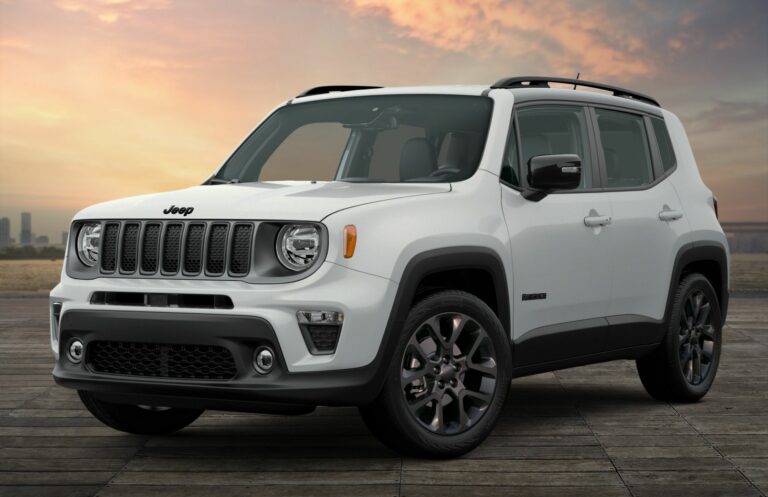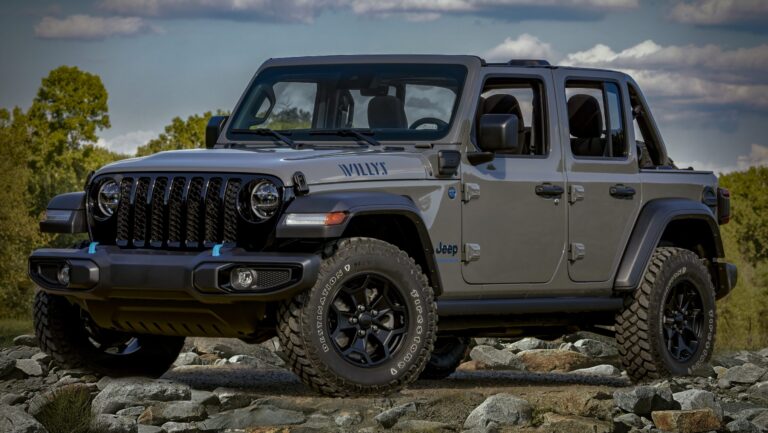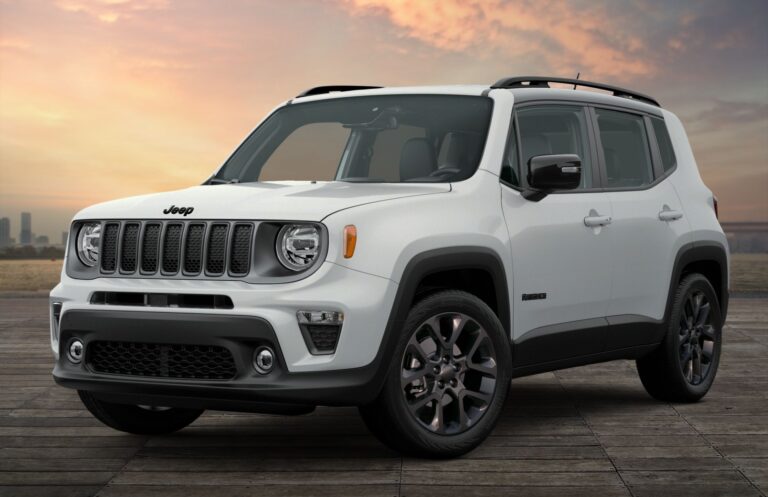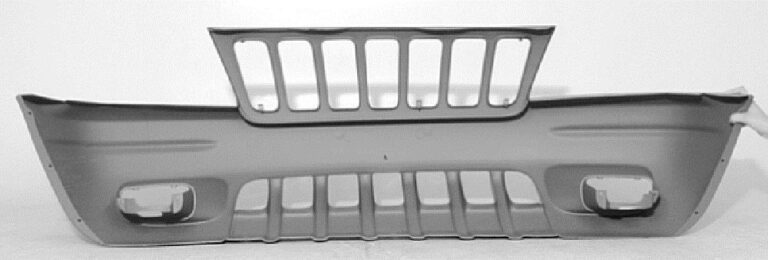1969 Jeep CJ5 For Sale: Your Guide to Owning an American Icon
1969 Jeep CJ5 For Sale: Your Guide to Owning an American Icon jeeps.truckstrend.com
The year 1969 often conjures images of counter-culture, moon landings, and iconic music festivals. Yet, amidst the cultural shifts, another enduring icon rolled off the assembly line, ready to conquer any terrain: the 1969 Jeep CJ5. More than just a vehicle, the CJ5 represents a bygone era of rugged simplicity, unwavering capability, and unadulterated freedom. For enthusiasts and collectors alike, finding a 1969 Jeep CJ5 for sale isn’t just about acquiring a classic car; it’s about investing in a piece of American automotive history, a testament to utility and adventurous spirit that continues to captivate generations.
This comprehensive guide will delve into everything you need to know when considering a 1969 Jeep CJ5 for sale, from its enduring appeal and critical inspection points to the practicalities of ownership and current market dynamics.
1969 Jeep CJ5 For Sale: Your Guide to Owning an American Icon
The Enduring Appeal of the 1969 Jeep CJ5
The CJ5, or "Civilian Jeep," traces its lineage directly back to the military Willys MB of World War II. By 1969, it had evolved into a more refined, yet still undeniably raw, off-road machine under Kaiser Jeep ownership. Its compact size, robust construction, and open-air design made it an instant classic for adventurers, farmers, and anyone who valued functionality over creature comforts.
What makes the 1969 model particularly sought after?
- Iconic Design: The short wheelbase, flat fenders, round headlights, and seven-slot grille are instantly recognizable and evoke a sense of timeless adventure.
- Rugged Simplicity: With minimal electronics and straightforward mechanicals, the 1969 CJ5 is relatively easy to work on, making it appealing to DIY enthusiasts and those who appreciate mechanical purity.
- Engine Choices: While earlier CJ5s featured the "Hurricane" F-head four-cylinder engine, by 1969, the more powerful and torquey 225 cubic-inch "Dauntless" V6 engine (sourced from Buick) was a popular option, offering significantly improved performance for both on-road and off-road driving. This engine is highly regarded for its durability.
- Off-Road Prowess: Equipped with a sturdy chassis, leaf-spring suspension, and a two-speed transfer case (Dana 18 or later Dana 20), the CJ5 was—and remains—an incredibly capable off-road vehicle, able to navigate challenging terrains with surprising ease.
- Customization Potential: The aftermarket for CJ5s is vast, allowing owners to personalize their vehicles with lift kits, modern engines, upgraded axles, and various accessories, enhancing both performance and aesthetics.
- Nostalgia and Collectibility: For many, the 1969 CJ5 represents a simpler time, a connection to a past era of American manufacturing and exploration. Its increasing scarcity in good condition only adds to its collectible status.

What to Look For: Key Considerations When Buying a 1969 CJ5
Purchasing a classic vehicle like a 1969 CJ5 requires a keen eye and a thorough inspection. These vehicles are over five decades old, and their condition can vary wildly.

-
Rust, Rust, Rust: This is the number one enemy of any vintage Jeep.
- Frame: Inspect the entire frame for cracks, bends, and significant rust, especially near suspension mounts and crossmembers. Pitting is acceptable; flaking or holes are red flags.
- Body Tub: Check the floorboards, especially under the pedals and seats, and the rear cargo area. Look for rust in the fenders, rocker panels, and tailgate. The area where the body mounts to the frame is also critical.
- Undercarriage: Examine the exhaust system, fuel tank skid plate, and all drivetrain components for excessive corrosion.
-
Engine Condition:
- Originality: Is it the original "Dauntless" V6, or has it been swapped? A correct V6 can add value.
- Leaks: Look for oil, coolant, and fuel leaks.
- Starting & Running: Listen for unusual noises (knocks, taps, squeals), check for excessive smoke from the exhaust (blue for oil, white for coolant, black for rich fuel mixture).
- Compression Test: Ideally, have a mechanic perform a compression test to gauge engine health.
-
Transmission and Drivetrain:
- Manual Transmission (likely T-86 or T-14): Check for smooth shifting through all gears, both high and low range. Listen for grinding or clunking.
- Transfer Case (Dana 18 or Dana 20): Engage 4-wheel drive high and low. Ensure it shifts easily and stays engaged.
- Axles (Dana 27/30 front, Dana 44 rear): Check for leaks around the differentials and listen for howling noises during a test drive, which could indicate worn gears or bearings.
- U-Joints: Inspect universal joints on the driveshafts for play.
-
Suspension and Steering:
- Leaf Springs: Look for broken leaves, sagging, or excessive rust.
- Shocks: Check for leaks or signs of being worn out.
- Steering: Feel for excessive play in the steering wheel. Inspect the steering box, tie rods, and drag link for looseness or wear.
- Brakes: The 1969 CJ5 came with drum brakes all around. Check for proper function, pulling to one side, or a spongy pedal. Inspect brake lines for rust or leaks.
-
Electrical System: While simpler, old wiring can be brittle or corroded. Test all lights (headlights, tail lights, turn signals), wipers, gauges, and the horn.
-
Documentation: A clear title is paramount. Service records, original owner’s manuals, and any history of restoration work can significantly add to the vehicle’s value and provide peace of mind.
Types of 1969 CJ5s For Sale
The market for vintage Jeeps is diverse, offering vehicles in various states of condition and modification. Understanding these categories will help you narrow your search and set realistic expectations.
- Project Vehicles: These are typically the most affordable, requiring significant mechanical, body, and/or paint work. They are ideal for seasoned DIY enthusiasts with a workshop and patience. Expect rust, non-running engines, and missing parts.
- Drivers/Runners: These CJ5s are in operational condition, meaning they start, run, drive, and stop. They might have cosmetic flaws, minor mechanical issues, or be slightly modified. They’re great for immediate enjoyment and can be improved over time.
- Restored/Show Quality: These vehicles have undergone extensive, often frame-off, restorations to bring them back to original or better-than-original condition. They command the highest prices and are often trailered to shows rather than driven off-road.
- Modified/Restomods: These CJ5s have been customized with modern engines (e.g., Chevy V8, Ford V8), updated transmissions, suspension lifts, power steering, disc brakes, and other contemporary features. They offer enhanced performance and comfort but vary wildly in quality of workmanship and can be expensive.
Navigating the Purchase Process
- Research & Budget: Before you start looking, research market values based on condition and location. Set a realistic budget, and remember to factor in potential repair costs, insurance, and registration. Always set aside a contingency fund.
- Where to Look:
- Online Marketplaces: Craigslist, eBay Motors, Facebook Marketplace, Bring a Trailer (for higher-end examples).
- Specialized Forums & Clubs: Jeep forums (e.g., Early CJ5.com, The CJ2A Page) and local 4×4 clubs often have classifieds sections.
- Classic Car Dealers & Auctions: These can be good sources for restored or well-maintained vehicles, but prices may be higher due to dealer markups.
- Pre-Purchase Inspection (PPI): This cannot be stressed enough. If you’re not an expert in vintage Jeeps, hire a qualified mechanic who is familiar with them to perform a thorough inspection. This small investment can save you thousands in future repairs.
- Test Drive: Always test drive the vehicle. Pay attention to steering, braking, transmission shifts, engine sounds, and any vibrations. Drive it at various speeds and engage 4-wheel drive if possible.
- Negotiation: Be prepared to negotiate. Use any identified issues from your inspection as leverage.
Ownership Experience: Tips and Challenges
Owning a 1969 Jeep CJ5 is a unique experience. It’s not like driving a modern SUV; it requires a different mindset and approach to maintenance.
Tips:
- Embrace the Simplicity: The lack of power steering, power brakes, and advanced electronics is part of its charm. Learn to appreciate the raw, connected driving experience.
- Join a Community: Connect with other CJ5 owners through forums and clubs. They are invaluable resources for advice, parts, and camaraderie.
- Learn Basic Maintenance: These Jeeps are relatively simple. Learning to change fluids, adjust brakes, and perform basic tune-ups will save you money and enhance your connection with the vehicle.
- Parts Availability: Thanks to a strong enthusiast base and dedicated aftermarket manufacturers, most parts for the 1969 CJ5 are readily available, from body panels to engine components.
- Classic Car Insurance: Look into specialized classic car insurance, which often offers better rates and agreed-upon value coverage compared to standard policies.
Challenges:
- Safety: The 1969 CJ5 lacks modern safety features like airbags, crumple zones, and advanced braking systems. Drive defensively and be aware of its limitations.
- Comfort: Expect a noisy, bumpy, and sometimes drafty ride. Long highway trips can be tiring.
- Fuel Economy: Don’t expect stellar MPG. The Dauntless V6 is powerful but thirsty.
- Rust Prevention: Ongoing vigilance is required, especially if you live in a humid climate or drive on salted roads.
- Finding Skilled Mechanics: While simple, not all modern mechanics are familiar with vintage carbureted engines or manual transmissions.
1969 Jeep CJ5 For Sale: Estimated Price Guide
Please note that these prices are estimates and can vary significantly based on location, originality, documentation, and the seller’s motivation. This table provides a general guideline.
| Condition Category | Estimated Price Range (USD) | Key Characteristics | Pros | Cons |
|---|---|---|---|---|
| Project Vehicle | $3,000 – $8,000 | Non-running or barely running, significant rust, missing parts, major mechanical issues. | Lowest entry price, ideal for a full custom build or hands-on restoration, learn mechanics. | Requires substantial investment in time, money, and skill; no immediate usability; final cost can exceed purchase price of a better condition vehicle. |
| Driver/Runner | $8,000 – $20,000 | Starts, runs, drives, and stops. May have cosmetic flaws (dents, faded paint), minor mechanical issues, or older modifications. | Enjoyable immediately, can be improved over time, good balance of usability and potential for personalization. | Still requires ongoing maintenance and potential repairs; may not be show-quality; hidden issues could emerge. |
| Restored | $20,000 – $45,000+ | Professionally restored to near-original or better-than-original condition. Excellent paint, interior, and mechanicals. Often frame-off. | Turn-key, visually stunning, reliable for its age, holds value well, minimal immediate work required. | Highest purchase price, less suitable for heavy off-roading due to potential damage to pristine finish, may be over-restored for some. |
| Modified/Restomod | $15,000 – $50,000+ | Upgraded engine (V8 swap common), modern suspension, disc brakes, power steering, custom interior. Quality varies widely. | Enhanced performance, comfort, and safety; unique and personalized; more suitable for modern driving. | Price highly dependent on quality of modifications; potential for poorly executed work; may lose some original character; harder to assess true value. |
Frequently Asked Questions (FAQ) about the 1969 Jeep CJ5 For Sale
Q: What engine options were available in the 1969 Jeep CJ5?
A: The primary engine for the 1969 CJ5 was the 225 cubic-inch "Dauntless" V6, sourced from Buick. Some earlier models or regional variations might have still featured the "Hurricane" F-head four-cylinder.
Q: Are parts readily available for a 1969 CJ5?
A: Yes, parts availability is excellent. Due to the CJ’s long production run and vast popularity, there’s a robust aftermarket industry providing everything from body panels and drivetrain components to electrical parts and interior pieces.
Q: Is a 1969 CJ5 safe for daily driving?
A: Compared to modern vehicles, a 1969 CJ5 lacks most contemporary safety features (airbags, ABS, crumple zones, reinforced cabins). While it can be driven daily, it’s generally recommended for occasional use, weekend adventures, or as a secondary vehicle where its limitations are understood and accounted for.
Q: How much does it cost to restore a 1969 CJ5?
A: Restoration costs vary wildly depending on the initial condition of the vehicle and the desired level of finish. A full, professional frame-off restoration can easily cost anywhere from $20,000 to $50,000 or more, not including the purchase price of the vehicle itself. DIY restorations can be cheaper but require significant time and skill.
Q: What is the typical fuel economy of a 1969 CJ5?
A: Fuel economy is not a strong suit. With the Dauntless V6, you can typically expect anywhere from 10 to 15 miles per gallon (MPG), depending on driving conditions, vehicle modifications, and tuning.
Q: Can I put a modern engine in a 1969 CJ5?
A: Yes, engine swaps are a very common modification for CJ5s. Popular choices include small-block Chevrolet V8s, Ford V8s, or even modern Jeep engines. However, an engine swap is a significant undertaking that often requires modifications to the transmission, transfer case, axles, suspension, and electrical system, adding considerable cost and complexity.
Conclusion
The 1969 Jeep CJ5 for sale represents more than just a classic vehicle; it’s an opportunity to own a tangible piece of Americana, a symbol of freedom and rugged individualism. While acquiring and maintaining one demands careful consideration and a degree of commitment, the rewards are immeasurable. From its timeless design and surprising off-road capabilities to the deep sense of nostalgia it evokes, the CJ5 offers an authentic driving experience unlike anything modern vehicles can provide. Whether you seek a challenging restoration project, a reliable weekend cruiser, or a show-stopping classic, the 1969 Jeep CJ5 promises an adventure that extends far beyond the pavement. Embrace its quirks, respect its heritage, and you’ll find that owning this iconic Jeep is not just about getting from point A to B, but about savoring every moment of the journey.





